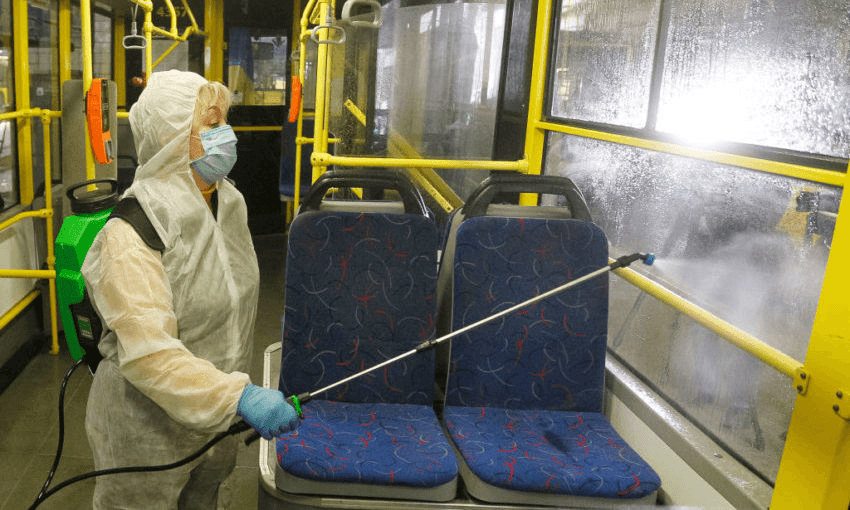Siouxsie Wiles offers some context around a couple of new studies on the coronavirus.
Two new studies relating to Covid-19 studies have begun circulating online, with some alarming headlines appearing in the media. Let me put them into context for you.
The virus is still spread via droplets
As I’ve explained before, all data we have points to the Covid-19 coronavirus being transmitted via droplets and contaminated inanimate objects during close unprotected contact. A new study by Doremalen and colleagues has just been published online – it’s a preprint so is not yet peer-reviewed or published in a scientific journal – that looked at the survival of this coronavirus on different surfaces. I’ll get to that bit in a moment.
What Doremalen and colleagues also did was put the virus in a machine called a nebuliser. The job of a nebuliser is to turn a solution into a suspension of droplets in the air. In other words, the researchers put the virus in a machine that would make it airborne and – shock, horror – found that it could be airborne for a few hours.
Let me spell this out really clearly: this does not mean the Covid-19 virus is shed through the airborne route. All evidence points to droplet spread.
The virus can survive on surfaces for up to three days
A few days ago I reported on a study that looked at the ability of other coronaviruses can hang around on inanimate surfaces like steel for up to 48 hours, glass and wood for four to five days, and plastic for up to nine days.
Doremalen and colleagues also tested the Covid-19 coronavirus itself. They were able to detect viable virus for up to four hours on copper, up to 24 hours on cardboard, and up to two to three days on plastic and stainless steel. That means it looks like the virus is a little less hardy than the other coronaviruses tested before.
The virus is likely spread by some people before they have symptoms
Several preprints have been published, including this one, that suggest that some people may be able to shed the Covid-19 virus for up to three days before they have symptoms. This is in line with influenza and several other viral infections. It’s obviously a worrying development as it does mean that people may be more infectious in the early stages of Covid-19 than we initially thought.
These studies are also indicating that people are very infectious at the early stages of having symptoms. So that’s why people should stay at home if they start to feel any of the symptoms of Covid-19. That’s any of these: coughing, shortness of breath, fever, tiredness, feeling achy, sore throat, or runny/sniffly nose.
It’s worth mentioning that many of the people in these studies who had Covid-19 were living in the same household so that fits with all the data we have that most people need to be in repeated close contact with someone with the virus to pick it up.

